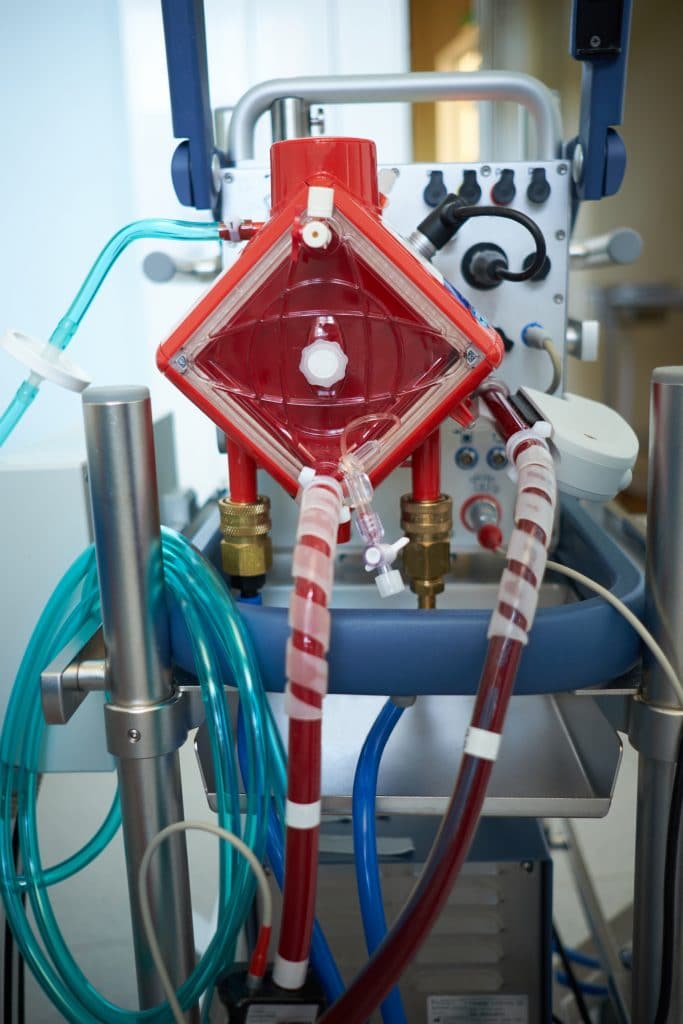Bi-Caval Dual Lumen Catheter for Pediatric Patients Undergoing Venovenous Extracorporeal Membrane Oxygenation

An 11-year-old female patient was admitted to a pediatric intensive care unit for the treatment of acute respiratory distress syndrome (ARDS). She had received peripheral blood stem cell transplantation for prolymphocytic leukemia 3 months prior and then had been diagnosed with pneumocystis carinii pneumonia 5 days prior, during a hematologic nadir. Despite the use of antibiotics and a mechanical ventilator, lung infiltration and hypoxemia were worsened. Therefore, venovenous extracorporeal membrane oxygenation (VV-ECMO) was initiated using 15 Fr cannula via right internal jugular vein (IJV) and 19 Fr cannula via right femoral vein. At the 21st day of VV-ECMO, she was still dependent on VV-ECMO, so we decided to change cannula to bi-caval dual lumen catheter (Avalon®, Getinge AB, Sweden) for active rehabilitation in the ICU. A 19 Fr Avalon catheter has dual lumen for both drainage and perfusion in one tube. It was inserted via right IJV to inferior vena cava (IVC) by transesophageal echocardiography (TEE) guidance. Catheter was well located without any complications, and it operated well with acceptable blood flow. Chest X-ray and transthoracic echocardiography showed good catheter positioning, and the recirculation rate was also dramatically decreased to 0%. The patient continuously received treatment for ARDS under the dependence of VV-ECMO.
